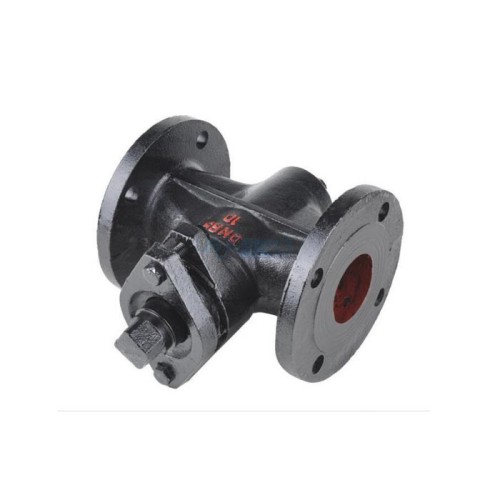ductile iron butterfly valve
Understanding Ductile Iron Butterfly Valves A Comprehensive Overview
Ductile iron butterfly valves have become essential components in various industrial applications, particularly in fluid control systems. These valves are known for their robustness, reliability, and cost-effectiveness, making them a preferred choice across a wide range of industries, including water treatment, oil and gas, and chemical processing. This article delves into the unique characteristics of ductile iron butterfly valves, their advantages, applications, and maintenance considerations.
What is a Ductile Iron Butterfly Valve?
A butterfly valve is a quarter-turn valve that uses a disc to regulate flow. The disc is positioned in the center of the pipe and can be turned 90 degrees to either fully open or fully close the valve. Ductile iron, an iron alloy that possesses enhanced strength and ductility compared to traditional cast iron, is often used to manufacture these valves. This material choice significantly enhances the performance and longevity of butterfly valves.
Unique Characteristics of Ductile Iron
Ductile iron is characterized by its high tensile strength, corrosion resistance, and ability to withstand considerable pressure, making it ideal for industrial applications. The microstructure of ductile iron allows for improved toughness and ductility, which translates into a highly durable valve that can withstand harsh operating conditions.
Advantages of Ductile Iron Butterfly Valves
1. Durability and Strength Ductile iron components exhibit excellent strength-to-weight ratios, making these butterfly valves resistant to cracking, chipping, and excessive wear. Their longevity minimizes the need for frequent replacements, leading to lower operating costs.
2. Corrosion Resistance The addition of alloying elements such as chromium and nickel enhances the corrosion resistance of ductile iron, making these valves suitable for liquids containing abrasives or corrosive materials.
3. Versatile Applications Ductile iron butterfly valves can effectively handle various fluids, including water, slurries, and gases. They are used in applications ranging from HVAC systems to municipal water supply systems and chemical processing plants.
4. Economic Efficiency The cost-effectiveness of ductile iron butterfly valves stems from their durability and minimal maintenance requirements. Compared to other materials, they provide excellent value over their lifespan.
5. Ease of Operation The design of butterfly valves allows for quick operation with a simple quarter turn. This characteristic not only simplifies the installation process but also enhances control over fluid flow in a system.
ductile iron butterfly valve

Applications of Ductile Iron Butterfly Valves
Ductile iron butterfly valves are widely employed in diverse sectors
- Water Treatment Plants They regulate the flow of water and allow for the isolation of specific areas in the system, ensuring efficient water treatment and distribution.
- Oil and Gas Industry Used in pipelines to control flow and pressure, these valves handle various fluids, including crude oil and natural gas, under significant operational pressures.
- Chemical Processing Ductile iron butterfly valves are effective for controlling aggressive and corrosive fluids commonly encountered in chemical manufacturing processes.
- Fire Protection Systems In firefighting systems, these valves help manage water flow, ensuring adequate pressure and volume during emergencies.
Maintenance Considerations
While ductile iron butterfly valves are inherently durable, proper maintenance is crucial to ensure their optimal performance and longevity. Regular inspections should be conducted to check for any signs of leakage or wear. Cleaning valves regularly helps prevent the build-up of debris that could impede their operation.
Lubrication of moving parts is essential to reduce friction and wear, extending the life of the valve. Additionally, operators should be aware of the operating conditions and select valves appropriately for the specific applications to avoid premature failure.
Conclusion
Ductile iron butterfly valves represent an excellent choice for a wide array of industries due to their strength, durability, and cost-effectiveness. As technology continues to advance, these valves will likely evolve, incorporating new features that further enhance their performance and reliability. In sum, their robust design ensures that they will remain a staple in fluid control applications for years to come, playing a critical role in efficient and reliable industrial operations.
-
Breakthrough in Domestic Low Temperature Valve Technology in ChinaNewsAug.18,2025
-
From Machinery to Intelligent Brain: The Digital Transformation Wave of the Valve IndustryNewsAug.18,2025
-
PCVEXPO 2025NewsAug.18,2025
-
The Key to Fluid Control: Exploring the Advantages of Ball Valves in Industrial SystemsNewsJul.09,2025
-
The Versatile World of 1, 2, and 3 Piece Ball ValvesNewsJul.09,2025
-
Stainless Steel Ball Valves: The Ideal Choice for Efficient Flow ControlNewsJul.09,2025
-
Optimizing Fluid Control with Ball Float ValvesNewsJul.09,2025




